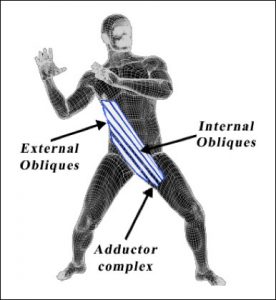The Live Side Plank
2018-12-19
I love it more than anything! When you see someone “get it” and their eyes light up and it seems like they really understand what you have been trying to connect for them FINALLY makes sense! It’s pretty awesome, especially when you open their minds to something so much bigger than they ever could have imagined. We do that all the time with DVRT and I thought the popularity of a specific type of side plank would serve as a the perfect platform to demonstrate this point.
When it comes to all the various types of core work we could do, the side plank usually doesn’t get the love it really should receive. Especially considering spine expert, Dr. Stuart McGill, puts the side plank as one of his 3 MUST core stability movements.
Whenever we teach how to get MORE out of the side plank at our DVRT courses people get so much more respect for this common exercise. Just like everything else, it is the little things that make the side plank a powerhouse exercise. I mean, you can side plank, or you can REALLY side plank with all the little details that make you feel completely different about the movement (you can read how we side plank in DVRT HERE).
Now, this post isn’t about how to side plank. Instead, I wanted to take a look at a side plank that is getting all types of buzz, the Copenhagen plank (you need a far off country name to make an exercise powerful, I’m still mad about not creating Siberian Sandbags, DOH!).

The exercise itself is actually good, I’m not sure if people understand WHY it is good. When we look at the groin muscles they actually work in what’s called the anterior oblique sling. This is a chain that includes the groin muscles connecting to the opposing obliques. We talk a lot about the opposite chain (being the lats, core, and opposing glutes), but both these are working at the same time.

This chain combined with the fact that the side plank helps our lateral chain, starts an exercise that makes a lot of important connections in our body. Connections that help our knees, low backs, shoulders, and so much more. It isn’t necessarily weakness that causes us issues, but lack of connection of these chains that tends to be more of an issue in achieving our goals.

The lateral chain you can see shows us how having weakness on one side glutei and hamstring can actually impact the low back upon the other side. Many people think the lateral chain is trained with side bends, but these muscles are mostly designed to RESIST such movement. That is why side plank progressions are so important.
Okay, you can see why the Copenhagen side plank is a good drill, so what’s my problem? Actually nothing! Other than most people see an exercise and don’t see how these concepts actually apply to a really wide array of exercises. That we should be using these functional fitness concepts as a cornerstone to many of our exercise progressions.
The exercises above are common DVRT movements we use to teach how to resist rotation, but you should see some similar elements of the side plank that exist in their performance. You start to not look at individual muscles, but the connection of these chains!
You begin to see how dynamic using these concepts start to make our movements. At first glance, the average person would be quite confused with what muscles are trying to hit. They might be able to see lower body or pressing movements, but they would miss the deeper chains that are involved that make these such impactful drills.
It doesn’t have to be complicated either to start introducing these concepts. What I love about using positions like half kneeling is that we get the elements of the side plank but we are more upright so we have to learn to resist movement side to side more, we have to be more reactive. Implementing simple DVRT drills like, Greg Perlaki, shows in the Arc Press really emphasizes the need to resist extension and lateral motion. In other words, making all these chains working in beautiful concert.
Where DVRT gets really different is in the dynamic movements you see below. Some coaches would actually use this Copenhagen side plank, but do little else to stress these functional fitness concepts. What I love about DVRT is we take these ideas from the ground to such powerful and reactive environments. That means we continue to build strength, stability, and movement in ways that usually blow people away.
If we want to start creating better solutions, we have start looking at needs with a new pair of glasses. Check out our DVRT education HERE and our Ultimate Sandbags HERE for 30% off with coupon code “holiday”
https://www.instagram.com/p/Brm9tTzBflo/
© 2025 Ultimate Sandbag Training. Site by Jennifer Web Design.







